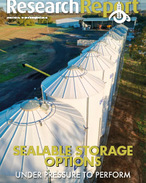This article is 9 years old. Images might not display.
Findings from Department of Agriculture and Food Western Australia trials weighing up options to overcome water repellent sandy and loamy gravel soils will be delivered today at the GRDC Grains Research Update, Perth.
Three research sites and a demonstration site were established last year in the West Midlands and around Kojonup to assess options for managing soil water repellence.
The project received funding from the Grains Research and Development Corporation through its Soils Constraints - West group of WA projects.
DAFWA soil scientist Stephen Davies said treatments included short-term mitigation options such as soil wetting agents or different seeding approaches and longer-term one-off deep tillage amelioration options applied prior to seeding.
Crops were assessed for early establishment, nutrient uptake and grain yield. Soils were assessed for severity of water repellence prior to treatments being applied and after seeding.
Davies said strategic (one-off) deep tillage using a modified one-way disc plough reduced topsoil water repellence and improved crop establishment and yield.
“It also provides an opportunity to incorporate lime or other soil amendments and can improve nutrient availability and uptake,” he said.
“At West Midlands, the strategic tillage approach gave superb results – wheat establishment improved by 60% and yield by 85%, an increase of 1.5 t/ha, compared with the unploughed treatments.
“At Kojonup, strategic tillage also gave excellent results in forest loamy gravels and the soil wetters worked very effectively.
“Strategic tillage on these forest gravels increased establishment by up to one-third and increased yield by 50% or more, an actual yield increase of more than 1.3 t/ha.
“The soil wetters increased barley establishment by 10% to 70%, depending on the treatment, while yield increased from 15 to 30 per cent, an increase of 0.5 to 1.0 t/ha of extra grain yield. There were also very good responses in canola.”He noted that one-off strategic tillage could be costly and slow to implement, so it was important to use low-cost mitigation approaches on affected soils while assessing the benefits of strategic tillage using test strips.
Davies will also discuss new developments in the use of soil wetters.
“Wetters can still effectively improve establishment on water repellent soils when banded with the seed,” he said.
“Some soil wetters are now compatible with UAN and other liquid fertilisers. Taken in combination, these developments mean that growers with liquid kits on their seeder bars for banding liquids could very readily trial or adopt soil wetters without the need for a separate liquid system to deliver the wetter behind the press wheels.
“It is also likely that the wetters can act as a carrier for liquid nutrients and help improve crop access to them.”
The GRDC Grains Research Update, Perth is being held at the Perth Convention and Exhibition Centre.























